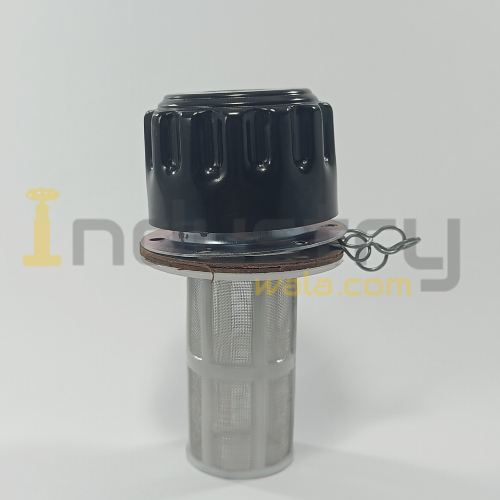- Shop all catagories
- Automated Valves
- Gauges & accessories
- Hydraulics
- Pneumatics
- Water Meters
- Manual Valves
- IBR Certified Boiler Valves
- Non IBR Boiler Valves
- Pipe Fittings & Flanges
Hydraulic Air Breather Tank Cap (Length 150mm)
₹499 Original price was: ₹499.₹349Current price is: ₹349.
Product Information
Description
Additional information
Reviews
Description
In hydraulic systems, the presence of solid particulates can cause significant damage to system components and severely impact system performance. For this reason, industry professionals integrate reservoir breather filters—also referred to as air breather filters—into their hydraulic equipment to prevent airborne materials from entering through the reservoir.
What Is the Function of an Air Breather in an Hydraulic Tank?
In open-circuit hydraulic systems, air moves freely into and out of the reservoir as the fluid level falls and rises. Unfiltered air can carry a variety of foreign materials—e.g., dust, dirt, and debris—all of which can contaminate the process fluids within a hydraulic system. If left unchecked, these contaminants can damage system components or reduce system efficiency. Hydraulic breather filters remove solid particulates from incoming air to ensure the hydraulic system continues to perform as intended for the duration of its expected service life. As indicated above, air breathers play a critical role in hydraulic systems. For this reason, it is important to maintain them properly to ensure they continue to fulfill their purpose effectively and efficiently. Proper maintenance for air breather filters involves regularly changing out the filter element. Failure to do so can lead to clogging, which, over time, can lead to the formation of a partial vacuum within the reservoir. This vacuum, in turn, can cause cavitation, which often leads to premature pump failure if left unchecked. Air breather filters integrated with pressure valves are generally used to eliminate the risk of cavitation. If the pressure rises above safe levels, the valve activates to reduce the pressure within the system.Additional information
Additional information
Reviews










